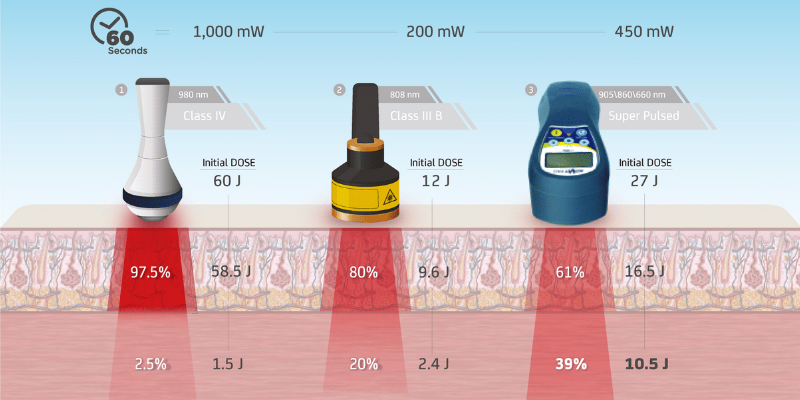Multi Radiance lasers use true super pulse technology with 5 different wavelengths, all with their own therapeutic effects. Peer-reviewed research has confirmed the synergistic combination of these wavelengths and frequencies delivers more photon density through the skin for optimised outcomes in the target tissue than other leading lasers.

When it comes to laser therapy, wavelength determines the depth of penetration, not power. Super Pulsed Lasers (ACTIVet Pro & My Pet) use wavelengths, rather than power, allowing light to be delivered at greater depths, due to no safety concerns with heat.